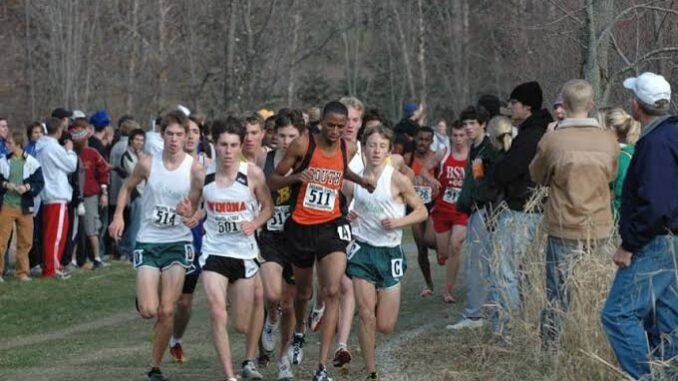
Ava Rau of Waterloo High School is photographed behind after running at the Class 2A State Cross Country Meet on Saturday in Peoria. Today we will discuss about Cross Country Running: History| Rules| Point system
Cross Country Running: History| Rules| Point system
Cross country running is a sport in which teams and individuals run in the open air on natural terrain such as dirt or grass. The course, usually 4–12 kilometers (2.5–7.5 mi) long, can include grass and earth surfaces, passes through woodlands and open country, and includes hills, flat ground, and sometimes gravel roads and roads. There are minor obstacles involved. It is both an individual and a team sport; Runners are judged by a points-scoring method based on individual times and teams. Men and women of all ages compete in cross country, which usually takes place during autumn and winter, and can include rain, hail, snow or hail in a wide range of weather conditions and temperatures.
History

Formal cross country competition traces its history to the 19th century and an English sport called “Hare and Hounds” or “Paper Chase”. English schools began participating in cross country races in 1837, and established a national championship on 7 December 1867. It was held at Wimbledon Common in south-west London. It was the first cross country race that was considered “open”, or could be run by anyone. Its original purpose was to mimic steeplechase for off-season training, and was considered a bit of a prank. [citation needed] The race was about 3.5 miles long, and ran through very marshy and mountainous terrain. The course was not well marked, and many contestants lost, resulting in it being declared a no-race. Matters were not helped by the fact that the race was run in the dark, as it started at 5 pm.
Rules
The minimum possible score in a five-to-score match is 15 (1 2 3 4 5), which is achieved by the team’s runners finishing in each of the top five positions. If there is one opposing team it will have a score of 40 (6 7 8 9 10), which can be considered a “sweep” for the winning team. In some competitions, a team’s sixth and seventh runners are scored in the overall field and are known as “pushers” or “displacers” because their places can be counted ahead of other runners. In the above match, if there are two non-scoring runners and they come 6th and 7th overall, the opponent’s score will be 50 (89 10 11 12). Accordingly, the official score for a forfeit double visit is 15-50.
Point system
Cross country is similar to golf in that the lowest score wins. A perfect score is 15 points, with the top five runners occupying the first five finishing positions.
While only the top 5 runners receive a “score” for their team, the sixth and seventh placed runners also receive a point. Their points can be valuable because they can increase the opposing team’s score by placing them in front of the top five runners on that team. The scores of the sixth and seventh runners can also be used for tie breaking.
Runners who do not have a team of at least five runners are removed from the results for scoring purposes.
If a meet allows more than seven runners in a race, runners who place eight or more on their team are removed from the results for scoring purposes.
In the event of a tie between two or more teams, the place of the runners in sixth place is compared. If only one team has a sixth runner, that team wins. If there are only five runners on all teams, the scores of the top 4 runners are used.
Cross Country running at its purest at the Connacht Championships over the weekend 😬 💪🏼
— Athletics Ireland (@irishathletics) November 8, 2022
Well done all 👏🏼
pic.twitter.com/10KtbHDuAW
